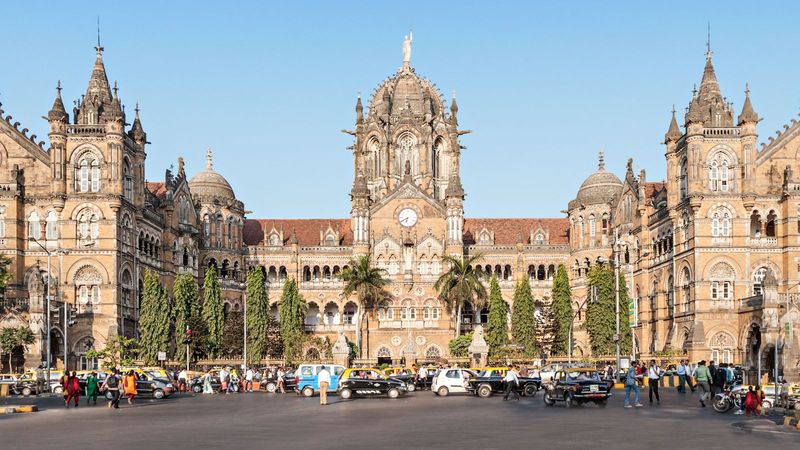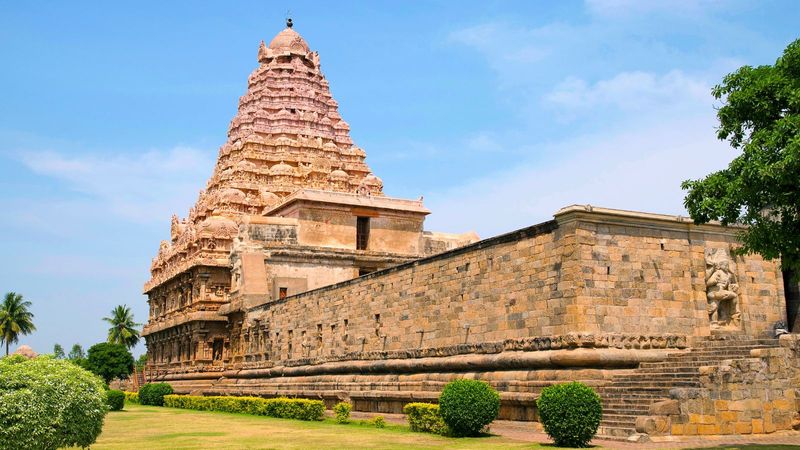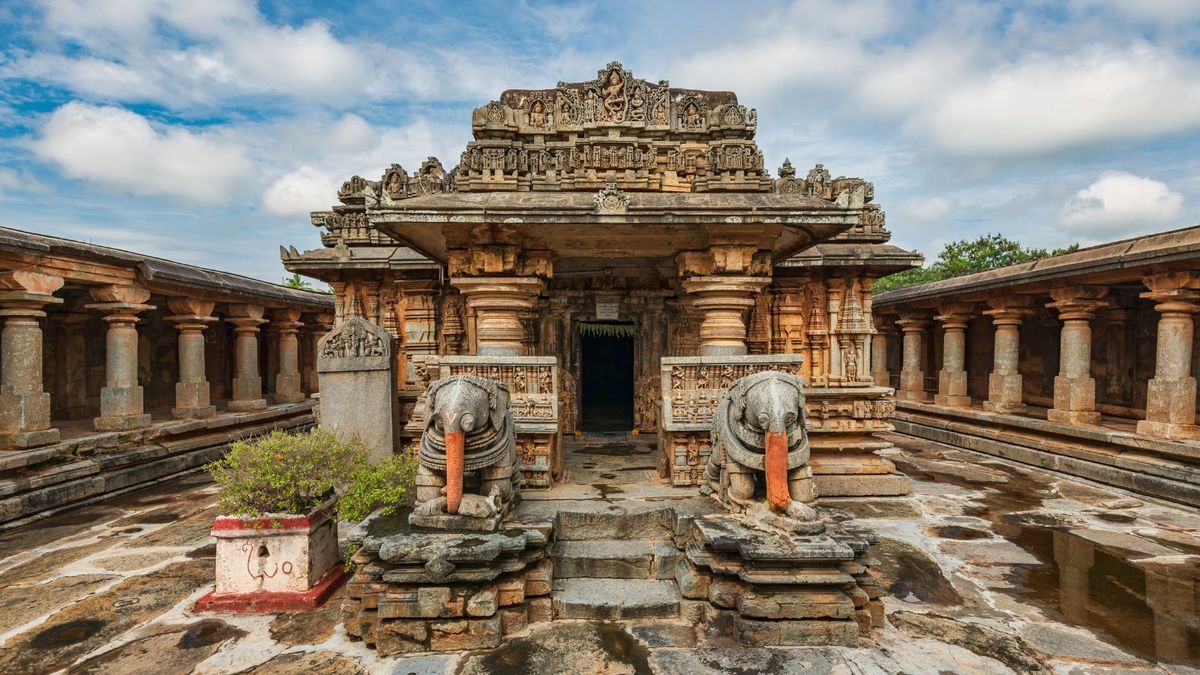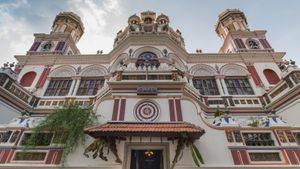With the aim towards the promotion of Indian culture and way of life, we are surely and steadily moving ahead. India now has an overall figure of 42 heritage properties, among which 34 are cultural sites, 7 are natural sites and 1 is a mixed property, as described by ASO. With Shantiniketan and Hoysala Temples being recently added to the list, it is indeed a moment of celebration and immense joy for the country. Here are the latest and some of the lesser-known UNESCO World Heritage Sites in India you must know about.
UNESCO World Heritage sites in India you should check out
1. Shantiniketan
Established by the Nobel laureate Rabindranath Tagore, Shantiniketan is a recent addition to the UNESCO World Heritage Sites, with it newly being added to the list on September 17, 2023. Shantiniketan was founded by the renowned poet and philosopher in rural West Bengal, in the year 1901, he had also established the Visva Bharati University here almost a century ago. Shantiniketan was initially a residential school and centre of learning for arts and ancient Indian traditions, which has now procured a prestigious spot in the heritage list. Shantiniketan, with its folk traditions, art and education represents a vision and approach which transcends cultural boundaries.
2. Hoysala Temples
The Hoysala Temples in Karnataka were added to the list of UNESCO World Heritage sites on September 17, 2023. These temples include the Chennakeshava Temple at Belur, the Hoysaleshwara Temple at Halebidu and the Keshava Temple at Somnathpur in the Mysuru district. With its splendid architecture and symbolism, the Hoysala Temples are a true work of art. Their addition to the heritage list is a matter of great honour for India. All three temples are protected by the Archeological Survey of India, and were together nominated as ‘The Sacred Ensembles of Hoysalas.’ Built about 1000 years ago, these temples are truly products of true craftsmanship.
Timings: 6:30 am- 9:00 pm
Entry fee: No entry fee
3. Chhatrapati Shivaji Terminus

The Chhatrapati Shivaji Terminus is the Central Railways Headquarters of Mumbai. Established during the British era, this railway station is designed in a Victorian Gothic Revival style of architecture, along with themes from Indian traditional architecture. With its construction being completed in the year 1888, the terminus has a magnificent stone dome, turrets, pointed arches and a remarkable ground plan. It was added to the list of UNESCO World Heritage Sites in the year 2004 and is truly a historic property.
4. Sundarbans National Park

The Sundarbans National Park in West Bengal is the largest mangrove forest in the world. It is also a biosphere reserve, tiger reserve and national park. It is actually a large delta, which stretches over the River Hooghly in West Bengal to River Baleswar in Bangladesh. Deriving its name from the Sundari trees, which are dominant in the area, the Sunderbans National Park has a rich and varied ecosystem. Home to the Royal Bengal Tiger, there are a number of rare and endangered species of mammals, birds, aquatic animals and reptiles that can be found here. Declared as a UNESCO World Heritage Site in 1984, it surely has a unique ecological balance and diverse habitat.
Timings: 8:00 am- 6:00 pm (Monday-Friday), 10:00 am- 4:00 pm (Saturdays)
Entry fee: Rs 60 per person
5. Buddhist Monuments at Sanchi
Located in Madhya Pradesh, the Buddhist Monuments at Sanchi comprises a group of monolithic pillars, palaces, temples and monasteries. Dating back to the 1st and 2nd centuries B.C., these monuments were commissioned by the great Mauryan emperor, Ashoka. The monuments represent the oldest and the most iconic architecture through their sculpting techniques, symbols and icons which especially depict Buddha. The Great Stupa of Sanchi is an incredible piece of art from the ancient world. The most significant and oldest Buddhist monuments in India, the Buddhist Monuments at Sanchi are surely a marvel to look at.
Timings: 8:00 am- 7:00 pm
Entry fee: Rs 40 (Cash), Rs 35 (Online) per head
6. Khangchendzonga National Park

Khangchendzonga National Park falls in the category of mixed property in the list of UNESCO World Heritage sites. Located amidst the Himalayan range in the state of Sikkim, the Khangchendzonga National Park includes a unique blend of plains, valleys, lakes, glaciers and beautiful snow-capped mountains. The third highest peak in the world, Mount Khangchendzonga is also situated here, which has great significance in the Sikkimese culture. The Khangchendzonga National Park with its exceptional landscape and ancient forests is surely a sight to behold.
Timings: 6:00 am- 5:00 pm
Entry fee: Rs 350 per person for the first 7 days, Rs 40 for additional days
7. Great Living Chola Temples

Established by the kings of the Chola Empire, the Great Living Chola Temples are a group of Hindu temples stretched all over south India and the neighbouring islands. The group of temples include the Brihadeswara Temple at Thanjavur, the Brihadeswara Temple at Gangaikondacholisvaram and Airavatasvara Temple at Darasuram. These temples are the perfect example of the Chola architecture and sculpture. Maintained by the Archeological Survey of India, the temple complex of Brihadisvara and Thanjavur received the tag of UNESCO World Heritage Site in the year 1987 and represents outstanding value and creativity.
Timings: 8:30 am- 9:00 pm
Entry fee: No entry fee




